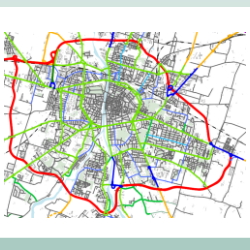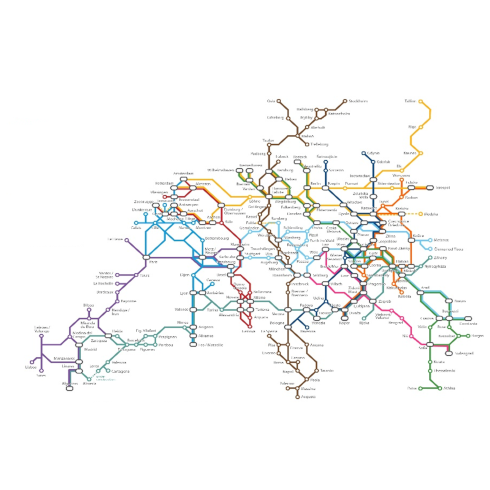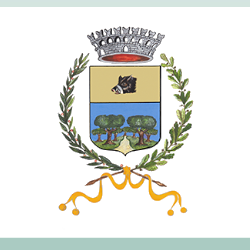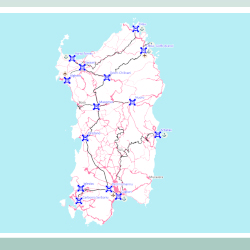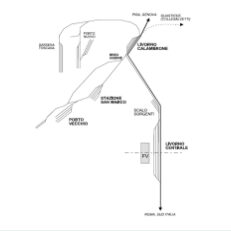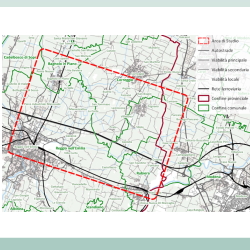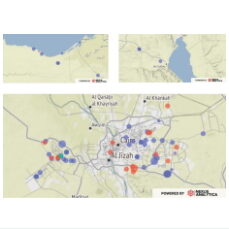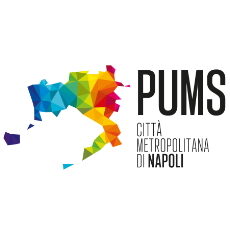- All
- African projects
- assessment
- assessment selected projects
- Assessment selected projects 2
- Assessment selected projects 3
- Assessment selected projects 4
- ASTRA
- Cost Benefit Analysis
- Electric mobility and ITS
- MOMOS
- planning
- planning selected projects
- planning selected projects 2
- planning selected projects 3
- planning selected projects 4
- planning selected projects 5
- projects
- Railways projects
- research
- research selected projects
- research selected projects 2
- research selected projects 3
- studies
- studies selected projects 1
- studies selected projects 2
- studies selected projects 3
- studies selected projects 4
- studies selected projects 5
- TRTingegneria
- TRUST
- urban mobility
- Design and assessment of the National E-Mobility Strategy in Jordan Electrification is one of the main options towards decarbonizing the transport sector. The Jordanian transport sector, currently reliant on fossil fuels, accounts for nearly 40% of the energy consumption in the country in 2020. Transport decarbonisation has to be addressed to achieve Jordan’s ambitious Nationally Determined Contribution (NDC) goals. From electricity-sector perspective, uncontrolled electric vehicle (EV) uptake may bring challenges such as increase in peak load and distribution grid congestion, but also present financial and technical opportunities due to new revenue streams. Seeing the potential and benefits of E-Mobility uptake, the Government of Jordan has included Designing a National E-Mobility Strategy as part of its Reform Matrix, under Pillar 9 Energy. To this end, the Ministry of Energy and Mineral Resources (MEMR) has been leading the effort in coordination with key stakeholders and implementing partners. The World Bank (WB), through the Jordan Growth Multi-Donor Trust Fund (MDTF), supports MEMR and GoJ in its mandate with required Technical Assistance (TA) activities. This project will inform the WB’s policy dialogues in Jordan related to scaling up E-Mobility, in the context of the GoJ’s effort to design, launch, and implement a National E-Mobility Strategy. This study will have a particular focus on energy-sector issues (notably charging infrastructure and charging tariff), but also build upon past efforts, consolidate previous findings, systematically assess the key issues at stake, and provide valid and actionable options in order to support GoJ’s formulation of a comprehensive National E-Mobility Strategy. TRT, supported by MRC (Spain), is leading the project and is responsible for the design and assessment of the strategy. As part of its activities TRT has developed the Jordan vehicle fleet model to forecast the uptake of electric mobility.
- Drafting of the General Urban Traffic Plan (PGTU) for the city of Parma The Municipality of Parma entrusted TRT with the service of drafting the General Urban Traffic Plan (PGTU) with the executive determination n. DD-2020-2813 of 23/12/2020. TRT presented the proposed Plan that is awaiting adoption and approval by the Municipality of Parma. Parma PGTU di Parma is structured as an implementation and short-term tool of the Sustainable Urban Mobility Plan (SUMP), a ten-year strategic instrument that the city of Parma adopted in 2017. TRT was also responsible of the drafting of the Sustainable Urban Mobility Plan of the city of Parma and, in 2019, was commissioned to coordinate the implementation and monitoring of Parma’s SUMP Parma PGTU follows the ministerial directives of 1995 and the subsequent updates of the New Highway Code, which provide guidance on the plan’s action themes, with indications on both transport supply and demand. The TMP was developed in two phases. The first phase reconstructed an updated knowledge framework of the mobility system, delving into its key aspects: the regulatory framework; the planning and programming framework, including the status of implementation of the current PUMS; the provision of transport networks and services, including the existing road network and classification as well as access regulation and zones 30; the roadside, in-structure and interchange parking system; motorised urban public transport; cycling and sharing services; mobility management actions; transport demand; the social and environmental impacts of the mobility system. The second phase was developed from the reading of the cognitive framework and the selection of objectives identified by ministerial directives. On this basis, the PGTU identified short-term measures inferred from those foreseen by the SUMP (2017) and updated taking into account the new opportunities introduced in the last two years as measures in favour of sustainable mobility. In particular, the topics covered by the Parma PGTU include: a new functional classification of the network, adapted to the recent changes to the road network and the traffic calming measures recently introduced; streets upgrading, securing roads, regulating access and moderating interventions (Zone 30, school roads, etc.); the establishment of “Area Verde” (Green Area), a Low Emission Zone covering the urbanised territory of Parma and the Blue Area (ZTL), as a revision of the system for regulating access to the urban and central area; the revision of the network of urban public transport services and closer modal integration with the bicycle network; parking policy (supply, regulation and pricing); the improvement of cycling through the introduction of cycle roads and routes, the realisation of measures for widespread cycling (Zone 30) and the implementation of new sharing and micro-mobility services.
- Scoping and Feasibility Study for a European Transport Market Study Client: RailNetEurope (RNE) RailNetEurope (in short, RNE), commissioned the consortium formed by TRT (lead) and HaCon a scoping and feasibility study for the development of a freight transport market study at the European level (European Transport Market Study, or ETMS). The need to investigate the technical characteristics, and the potential use cases of such a study stems from the scarce diffusion and lack of application of the Transport Market Studies made by individual European Rail Freight Corridors (RFCs) in the past. A European-level study would overcome the drawbacks identified with previous studies and would concretely support the necessity of optimising and coordinating efforts aimed at increasing the modal share of rail freight transport, in line with EU policy targets. The research process underlying the feasibility study was first grounded on a thorough analysis of existing RFCs’ Transport Market Studies, aimed at identifying the respective contents and structure, as well as the data sources and databases employed; further, the employment of EU-scale models was assessed with respect to the purposes of simulation and forecasting, and a wide stakeholder consultation strategy was activated, bringing i.a. infrastructure managers, railway undertakings, associations, port terminals, and members of the Rail Freight Corridors to the table. The project delivered a feasibility study with an accurate assessment of the actual possibility of making a Transport Market Study at the European scale, based on both the availability of necessary data and analytical tools, as well as the need to adequately and efficiently respond to the requests brought up by stakeholders. Specifically, several options for realising the study have been evaluated, accompanied by the definition of required analytical tools and methodologies. Based on the best solution, the main components of the actual study have been set, and guidelines for its realization have been redacted. For more information: RailNetEurope istitutional websire Dedicated page for Rail Freight Corridors
- Feasibility study of the ‘Shuttle’ service within the Cesano Boscone municipal area TRT was commissioned by the Municipality of Cesano Boscone to analyse the feasibility of implementing a public transport service within its territory. The study is focused on the definition of possible alternatives that are functional to the local context. To this end, TRT reconstructed the territorial cognitive framework, identifying the current road classification, the demographic evolution of the target population groups (over 65 and under 14) and its territorial distribution. Similarly, poles of attraction within the municipal territory were identified, both in terms of services to the population and commercial areas. The cognitive framework is concluded by the analysis of current LPT services, identifying the lines and routes and their timetables, and by the analysis of the overall travel demand described by the origin-destination matrix of the Lombardy Region. Following the analysis of the municipal local public transport service decommissioned in 2011, TRT proposed two general functional solutions and the relative management models, declining them on the basis of some important realisations already active at a European and national level. TRT proposed the implementation of a timetable-based car line to cover the deficiencies identified for the service already in operation along a route connecting the Tessera locality with the centre of Cesano Boscone. The second alternative consists of a flexible service upon request. TRT has presented the administration with several alternatives based on a number of active case studies. TRT will complete the work by defining the preliminary economic framework including a description of how the service will be entrusted, following an integration of the cognitive framework that the municipality wished to complete by distributing a questionnaire to the population. [tw_button icon=”” link=”https://www.trt.it/en/Projects/” size=”small” rounded=”false” style=”flat” hover=”default” color=”#223468″ target=”_self”]Projects[/tw_button]
- Consultancy assignment for specialist transport engineering activities related to the “Pre-feasibility study for a regional railway network in Sardinia” on behalf of Uniontrasporti TRT collaborated with GVG Engineering on an in-depth study on the current railway network in Sardinia, defining its characteristics and potential, for a study requested by Uniontrasporti. TRT analyzed the current railway network in terms of extension and technical characteristics of both the Rete Ferroviaria Italiana (RFI, main Italian railway infrastructure manager) and secondary narrow-gauge (ARST) networks; the analysis of services offered; the analysis of production nodes and tourist demand; the definition of the needs of the local population to favor the accessibility of inner areas and support regional economic development; the definition of requirements; and the identification of modal interchange points between passenger services. This was accompanied by an analysis of the interventions planned on networks according to the Economy and Finance Document 2022 (“Documento Economia e Finanza” of Italian government), the Framework Agreement between the Region of Sardinia and RFI, the RFI 2022 Business Plan, regional planning instruments, and the three-year plan of works of ARST. The services description was based on an analysis of the timetables published on institutional websites of individual organizations. The analysis focused also on tourist services, such as the Green Train (“Trenino Verde”, a touristic service on dismissed rail lines), and urban services, above all MetroCagliari and MetroSassari. This analysis led to the identification of interchange nodes, which were described in terms of the services present. The demand analysis completes the definition of the knowledge framework, identifying the main municipalities in terms of population and employees, tourist demand over the years and identifying the most attractive municipalities. Eventually, the definition of needs analyses the information gathered during several meetings held with local stakeholders, trying to define the priorities of the territory. The study is completed by the description of possible project interventions, constraints and criticalities of the network, which TRT supported in defining.
- Feasibility study and preliminary design of the railway network of the Northern Tyrrhenian sea port system TRT, with Vega Engineering, was in charge of the feasibility project for the development of railway network of the ports of Livorno and Piombino. The objective of the work is to quantify the transport demand observed in the past, with reference to the movement of goods and passengers and, at the same time, to estimate the future freight flows, also using the transport simulation model –TRUST, developed by TRTv that works at European scale. The project proposals envisage the improvement of the capacity of the existing terminals and their progressive adaptation to international standards. On the basis of the proposed project alternatives, a specific study was made of the railway capacity of the system in terms of the number of trains that can be operated by the two ports, verifying that the long-term demand forecasts can be met by the planned planning schemes, while also maintaining residual capacity . The transport performance of the railway system, together with the design characteristics (costs, construction times, etc.), constitute the database that has allowed the development of a Multicriteria Analysis that has compared the different design alternatives. A Cost Benefit Analysis was conducted, to assess the advantages and disadvantages of the project for the community.
- Traffic study on the opening of an exit along the A1 near Gavassa, Reggio Emilia TRT was commissioned to draw up a traffic study to evaluate the opening of a new exit along the A1 motorway, between Reggio Emilia and Correggio. The study saw the implementation of a macroscopic traffic model, a useful tool for the evaluation of the different hypotheses considered. A territorial analysis of the area in included, with an in-depth study of the characteristics of the road network and the traffic demand in the area, with the analysis of the origin-destination matrix of the regional model, the available traffic counts and an on-site inspection which included specific traffic counts. All these information were used to calibrate the model. The following step was the reconstruction of the reference scenario, with respect to the year 2040, in order to include in the model all the road interventions planned by regional and local administrative divisions. The traffic model was thus used to evaluate five different project hypotheses, evaluated at the year 2040: a three-way exit with connection to the ordinary road network, subject to redevelopment, to the south of the motorway axis a trumpet exit with connection to the ordinary road network north of the A1, subject to redevelopment an exit with separate functions which has an entrance to the north and to the south of the motorway; the hypothesis of a parallel road of A1 motorway which connects the Prato-Gavassa area with the ordinary road network in Via Gramsci (Reggio Emilia); the hypothesis of a parallel road of A1 motorway which connects the Prato-Gavassa area with the access road to the Reggio Emilia tollgate, including an overpass of Via Gramsci.
- Unlocking opportunities for private sector participation in electric mobility transition in Jordan and Egypt Electrification of transport stands out amongst the most promising emerging solutions at the interface of clean energy transition and sustainable transportation. Countries in the MENA (Middle East and North Africa) region are at very different stages of Electric-Mobility development. However, E-Mobility creates opportunities for climate change mitigation and adaptation, increase energy efficiency, enhance quality of transport services, and improve urban air quality, while taking advantage of the integration of higher shares of renewable resources, energy storage and demand response technologies in the evolving electricity grids across the region. The objective of this twofold consulting assignment is to provide support to the World Bank task team to deliver technical assistance to both Jordan and Egypt, with the aim to facilitate: private sector participation (PSP), including different forms and levels of engagement from the private sector to collaborate with the public sector (PPP); and private capital mobilization (PCM), which enables and leverages private sector investment to maximize the total financing resources available for development purposes, to support a more ambitious goal towards E-Mobility development. The studies for the two countries focus on two main pillars (e-buses fleets and EV public charging infrastructure), and provide operations-ready and investment-ready output, with suggestions on feasible business models and potential contractual arrangement for PSP and PCM in the e-mobility transition and investment rollout. The two projects are carried out by the same lean international consortium made by MRC Consultants and Transaction Advisers (ES), leading, and TRT (IT). In the consortium, TRT is specifically responsible for the EV charging infrastructure sub-sector (in both countries) and is leading the study related to Jordan.
- Sustainable Urban Mobility Plan and Urban Plan for Cycling Mobility of the Metropolitan City of Naples The Metropolitan City of Naples has commissioned the temporary grouping of companies consisting of TRT Ingegneria (agent), Sintagma (Principal) and TPS Pro (agent) to draft the Sustainable Urban Mobility Plans (SUMP) and the related “Biciplan” (Urban Plan for Cycling Mobility). The SUMP is draft in accordance with the guidelines issued by the former MIT today MIMS. Launched in September 2021, the drafting of the SUMP involves several phases: Definition of the “territorial knowledge framework”; Definition of Plan targets and objectives; Definition of policies, strategies and actions; Construction of scenarios and definition of the Plan Proposal; VAS and VIA (strategic and impact – environmental assessments). Along the drafting, the participatory process plays a fundamental role in all the activities underpinning the SUMP according to its own Participation and Communication Plan. TRT contribution in the SUMP drafting includes – in addition to participation along the entire process of the Plan elaboration – the drafting of the Biciplan and two thematic studies: freight transport and urban logistics and transport of people with reduced mobility. The Urban Plan of Cycling Mobility (Biciplan) promotes the use of bicycles as a mode of transport for daily, touristic and recreational activities, improving the safety of cyclists. The Biciplan identifies the strategic metropolitan network with itineraries that connect, in synergy with public transport, the urban centres as well as main attraction and intermodal poles. Sustainable urban freight transport and logistics address the rationalization of freight transport on a metropolitan scale cutting negative impacts and externalities linked with the distribution and the transportation of goods in urban areas. Transport of people with reduced mobility analyses measures to ensure maximum accessibility, autonomy and ease of travel through universally accessible means by removing architectural and virtual barriers. The fundamental objective is the definition of coordinated actions concerning the structure of services, accessibility to transport infrastructures (railway and underground service stations, interchange parking lots, ports, airports, etc.) and the increased participation of people with reduced mobility to public spaces. For more information (only available in italian) Documenti consultabili sul sito del PUMS di Città Metropolitana di Napoli News (only available in italian) Napoli: Borrelli incontra progettisti del PUMS. Tra i temi il tram veloce per la zona Nord, 13 maggio 2022


